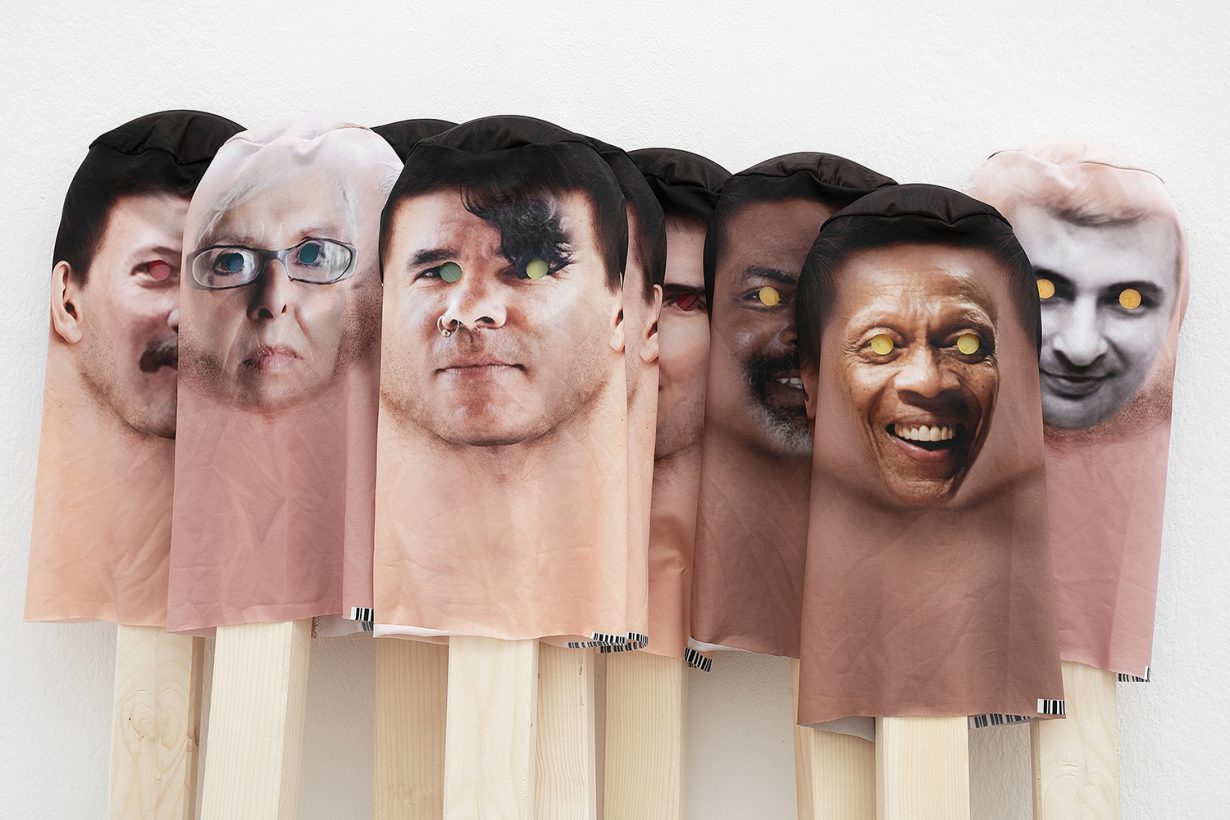Art History Review: The Global Artworld 1850-1950

Table of Contents
The Rise of Modernism and its Diverse Expressions (1850-1900)
This period saw the birth of modernism, a radical departure from the artistic traditions of the past. Its impact reverberated across the globe, inspiring a multitude of artistic responses.
Impressionism and its Legacy
Impressionism, born in France, revolutionized painting. Artists like Claude Monet, Pierre-Auguste Renoir, and Edgar Degas captured fleeting moments, emphasizing light, color, and the subjective experience of the visual world.
- Key Works: Monet's "Impression, Sunrise," Renoir's "Bal du moulin de la Galette," Degas's "The Dance Class."
- Influence on Subsequent Movements: Impressionism's emphasis on light and color profoundly influenced Post-Impressionism, Fauvism, and even aspects of early modern photography.
- Critiques of Impressionism: Initially dismissed as unfinished sketches, Impressionism was eventually recognized for its innovative approach to capturing the visual world.
Post-Impressionism: Beyond Impressionism
Post-Impressionism represented a reaction to and expansion upon Impressionism. Artists like Vincent van Gogh, Paul Cézanne, and Paul Gauguin moved beyond the purely observational approach, injecting their work with personal expression and symbolism.
- Key Stylistic Differences from Impressionism: Post-Impressionists explored thicker paint application (Impasto), more expressive brushstrokes, and a greater emphasis on personal interpretation.
- Individual Artistic Styles: Van Gogh's emotionally charged brushwork, Cézanne's geometrical structures, and Gauguin's symbolic use of color all represent distinct and influential styles.
- Impact on 20th-Century Art: Post-Impressionism paved the way for Expressionism, Fauvism, and other early 20th-century movements.
Global Artistic Developments
While Europe was the epicenter of many modern art movements, significant artistic developments occurred elsewhere. The influence of Japanese woodblock prints (Japonisme) on Western art is a prime example of cross-cultural exchange.
- Examples of Non-European Artistic Movements: The beginnings of modern art in Latin America, the development of distinct artistic traditions in Africa, and the flourishing of artistic styles in Asia.
- Cross-Cultural Influences: The exchange of ideas and artistic styles across continents enriched the global art world, highlighting the interconnected nature of artistic innovation.
The Explosion of Artistic Innovation in the Early 20th Century (1900-1950)
The early 20th century witnessed an unprecedented explosion of artistic experimentation. New movements emerged rapidly, each pushing the boundaries of artistic expression.
Fauvism and Expressionism
Fauvism, characterized by its vibrant, non-naturalistic use of color (Henri Matisse, André Derain), and Expressionism, focused on conveying raw emotion and subjective experience (Edvard Munch, Ernst Ludwig Kirchner), both emphasized intense feeling over objective representation.
- Key Characteristics of Each Movement: Fauvism's bold color palettes versus Expressionism's distorted forms and emotional intensity.
- Examples of Artworks: Matisse's "The Dance," Kirchner's "Street Scene."
- The Expression of Subjective Experiences: Both movements prioritized the artist's inner world and emotional response over objective representation of reality.
Cubism and its Influence
Cubism, pioneered by Pablo Picasso and Georges Braque, revolutionized art with its fragmentation of form and its exploration of multiple perspectives.
- Different Phases of Cubism: Analytic Cubism's monochromatic palette and fragmented forms, Synthetic Cubism's brighter colors and collage elements.
- Key Works: Picasso's "Les Demoiselles d'Avignon," Braque's "Violin and Candlestick."
- Its Influence on Abstract Art: Cubism's impact on abstract art is undeniable, its exploration of form and space laying the groundwork for later abstract movements.
Surrealism and the Unconscious
Surrealism explored the realm of dreams and the unconscious mind, drawing inspiration from psychoanalysis (Salvador Dalí, Joan Miró, René Magritte). Techniques like automatism aimed to access the subconscious.
- Key Characteristics: Juxtaposition of unexpected objects, dreamlike imagery, exploration of the irrational.
- Major Artists: Dalí's melting clocks, Miró's biomorphic forms, Magritte's enigmatic imagery.
- Relationship to Psychoanalysis: Surrealism's interest in the unconscious mind was directly influenced by the theories of Sigmund Freud.
The Growth of Abstract Art
Abstract art, abandoning representational forms, explored pure form, color, and composition (Wassily Kandinsky, Piet Mondrian).
- Key Figures: Kandinsky's spiritual abstractions, Mondrian's geometric compositions.
- Different Styles of Abstract Art: From Kandinsky's lyrical abstractions to Mondrian's rigidly geometric compositions, abstract art took many forms.
- Significance of Abstraction: Abstract art freed art from the constraints of representation, opening up new avenues of creative expression.
The Global Context: Art Beyond Europe and North America
The narrative of modern art often centers on Europe and North America, but artistic movements flourished worldwide. Understanding the global artworld 1850-1950 requires acknowledging the rich diversity of artistic expression beyond the Western canon.
- Examples: The development of distinct artistic styles in various regions of Asia, Africa, and Latin America, showcasing unique cultural contexts.
- Specific Examples of Artistic Movements and Artists from Different Regions: Highlighting the contributions of artists from non-European and non-North American backgrounds enriches our understanding of this era.
Conclusion: Wrapping Up the Global Artworld 1850-1950
The period from 1850 to 1950 represents a pivotal moment in art history. The rise of modernism, with its diverse expressions and global influences, fundamentally reshaped artistic practices. From Impressionism's revolutionary approach to light and color to the radical experimentation of Cubism and Surrealism, this era witnessed an unprecedented explosion of creative energy. Understanding the global context of this period is crucial to fully appreciating its impact on contemporary art. The diverse artistic movements and styles explored here only scratch the surface.
Key Takeaways: This era's artistic innovations laid the foundation for much of 20th- and 21st-century art. The global nature of artistic exchange should be emphasized; it’s a vital aspect of the historical context.
Call to Action: Dive deeper into the fascinating world of the Global Artworld 1850-1950! Explore further research on specific artists, movements, or geographical regions. Visit museums, explore online resources dedicated to 19th and 20th-century art, and expand your understanding of Modern Art History. The rich tapestry of this period awaits your discovery!

Featured Posts
-
 Celeb Fitness Orlando Blooms Cold Water Therapy On Fitness Friday
May 19, 2025
Celeb Fitness Orlando Blooms Cold Water Therapy On Fitness Friday
May 19, 2025 -
 Ufc Vegas 106 Fight Card Burns Vs Morales Odds And Expert Predictions
May 19, 2025
Ufc Vegas 106 Fight Card Burns Vs Morales Odds And Expert Predictions
May 19, 2025 -
 Final Destination Bloodline Director Teases Major Plot Development
May 19, 2025
Final Destination Bloodline Director Teases Major Plot Development
May 19, 2025 -
 Wnba White Guilt Parade Examining The Controversy
May 19, 2025
Wnba White Guilt Parade Examining The Controversy
May 19, 2025 -
 Ljnt Iemar Ghzt Nqyb Almhndsyn Yde Khtt Eml Qablt Lltnfydh
May 19, 2025
Ljnt Iemar Ghzt Nqyb Almhndsyn Yde Khtt Eml Qablt Lltnfydh
May 19, 2025
